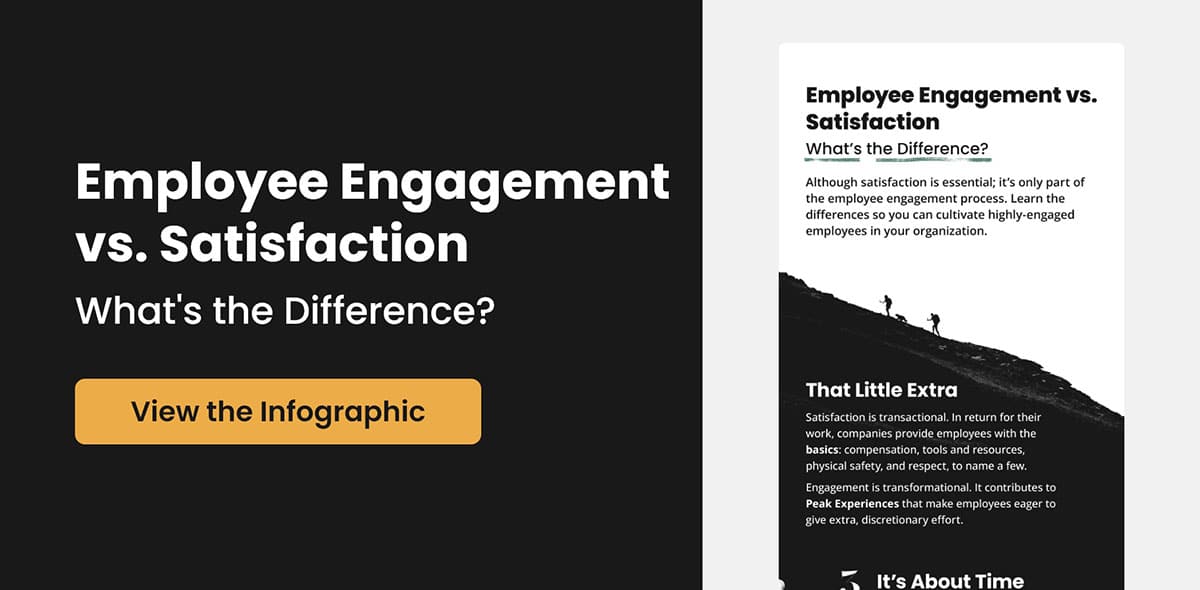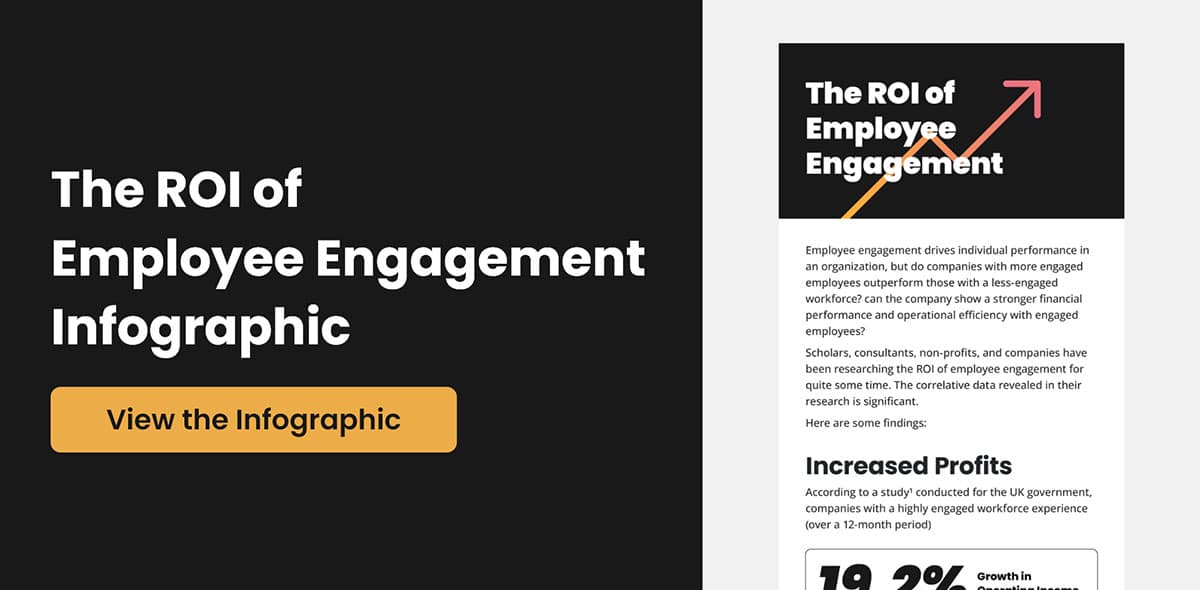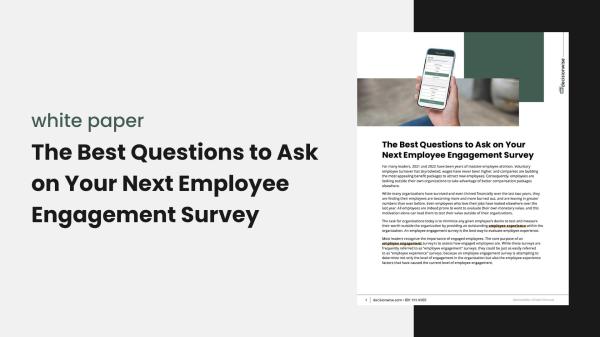Understanding Employee Engagement: Your Guide
Explore the core elements of employee engagement and its impact on organizational success. This is your comprehensive guide to defining and enhancing employee engagement’s role in business growth and success.

Defining and Explaining Employee Engagement: A Comprehensive Guide
Employee Engagement is an emotional state where employees feel passionate, energetic, and committed to their work. Engaged employees invest their best selves — their hearts, spirits, minds, and hands — in the work they do. Engaged employees go beyond the minimum, contributing their hearts, spirits, minds, and hands to their work. Leaders recognize them as thriving contributors, creating a workplace culture that fosters dedication and surpasses expectations.
Employee engagement thrives on emotional connection and subsequent action. Without either element, true engagement falters. Imagine feelings and actions as rowboat oars—complementary yet essential. Rowing with just one leads in circles, exerting effort but going nowhere. But employing both propels progress. Similarly, engaging employees demands emotional involvement and active participation for meaningful advancement within an organization.
How Does Employee Engagement Differ From the Employee Experience? Where does Employee Engagement Come From?
Employee engagement and Employee Experience differ in that one is a cause (experience) and the other (engagement) is a result; engagement comes from a thriving Employee Experience. Alignment of core values, mission, and purpose within the Employee Experience cultivates engaged employees at all organizational levels. When these elements harmonize, fostering a workplace environment supportive of engagement, employees tend to become passionately committed contributors.
To harness engagement’s power, leaders must grasp its driving elements, crafting an experience that is aligned with these factors. Paramount among these elements is a sense of belonging—an essential human need for connection to something larger. Employee engagement flourishes with foundational elements like meaning, autonomy, growth, impact, and connection, akin to a deep sense of belonging. Understanding and nurturing these elements foster a thriving engagement culture.
As leaders, we cultivate a sense of belonging through culture and experience. Culture shapes the atmosphere, whether virtual or physical, intentionally or organically. Every place has a unique culture. The Employee Experience is how your culture directly influences employees—an organization’s culture seen through their eyes. Crafting a positive experience promotes a profound sense of belonging and fosters employee engagement.
Traditionally seen as an organizational effort led by senior leaders, culture-building gains strength when focused on the basic, core manager/employee relationship. An organization’s Leader Driven Experience (LDX) lives (and either flourishes or stagnates) at this key intersection. Effective LDX is where managers ensure each team member has a purpose, path, and place within the organization. LDX is pivotal for fostering a robust Employee Experience and enhancing engagement.
DecisionWise’s mission is to arm leaders with employee feedback to help cultivate environments where individuals can authentically thrive and foster their best contributions in the workplace.
How Does Employee Engagement Differ from Employee Satisfaction?
Confusing employee satisfaction with engagement is common, leading to the belief that raising satisfaction levels will elevate engagement and motivation. However, they differ significantly. Job satisfaction operates on transactional terms, where workers expect basic accommodations in exchange for their contributions. It is a continual, mutual investment of essentials—compensation, tools, safety, communication, respect—that sustains this aspect of the relationship.
Satisfied employees fulfill tasks within the bounds of compensation, adhering to agreed terms. Job satisfaction aids retention and lowers turnover but doesn’t guarantee loyalty when employees are presented other opportunities. While satisfaction fosters happiness and occasional motivation, genuine engagement goes beyond and surpasses mere contentment. Engaged employees demonstrate commitment beyond typical obligations, showcasing a deeper investment and alignment with the organization’s goals and culture.
5 Key Elements Driving Employee Engagement
From 50M+ employee survey responses, we unearthed five vital factors for exceptional employee experiences. Building a triumphant employee journey demands integrating these elements, collectively termed ENGAGEMENT MAGIC®. Among these keys lies “connection,” pivotal for fostering a profound sense of belonging. Leaders leveraging these elements craft an environment where engagement thrives, propelling organizational success.
Meaning: Purpose Beyond the Job Description
While a job may seem mundane, individuals deriving meaning from their work recognize its significance. They find purpose, understanding their contributions align with a greater cause they deeply value. These individuals embrace the understanding that their efforts hold significance, nurturing a sense of purpose and connection to impactful endeavors within the workplace.
Autonomy: The power to shape your work and environment in ways that allow you to perform at your best.
Work constraints can stifle, with 34% fearing repercussions for speaking up. Autonomy isn’t a lack of rules but understanding boundaries while fostering freedom to excel. Within these parameters, creativity, innovation, and passion thrive. Empowering employees to operate within defined guidelines nurtures creativity, driving increased productivity and commitment to exceptional outcomes.
Growth: Being stretched and challenged in ways that result in personal and professional progress.
Empower your career journey with holistic growth beyond promotions and raises. Elevate satisfaction by mastering new skills, embracing challenges, and striving for continuous improvement—nurturing comprehensive employee engagement that transcends professional and personal realms.
Impact: Seeing positive, effective, and worthwhile outcomes and results from your work.
Drive meaningful employee engagement by emphasizing impact and incremental progress. Experience the satisfaction of contributing to personal goals, team success, and organizational achievements. Transform your workday from mere attendance to a pivotal role in daily operations—defining true engagement.
Connection: The sense of belonging to something beyond yourself.
We connect with our organizations through the people with whom we work, the mission and values of the organization, and the work that we perform. Our work and our company are a part of who we are. The job, then, becomes more than just a set of tasks we perform to earn a paycheck.
These five keys form the acronym ENGAGEMENT MAGIC®, which is a convenient way to keep these keys on the forefront of a leader’s mind. For a detailed look into how these elements can help support a winning employee experience, please see Our book, ENGAGEMENT MAGIC® : Five Keys for Engaging People, Leaders, and Organizations, which shows how managers can leverage these five keys.
Measuring Employee Engagement: Techniques & Methods
Elevate your organization’s performance through a dedicated focus on understanding and improving the factors that drive employee engagement. Our Best Practice Guide aids in selecting the ideal engagement measurement method. Dive into four survey types—always-on, pulse, spot/ad-hoc, and anchor—each offering distinct scopes and frequencies. Measure outcomes, perceptions, attitudes, and beliefs effectively to foster a thriving work environment aligned with your exact employee engagement goals.
Key Employee Engagement Survey Questions
Elevate your organization’s performance with our precise and actionable employee engagement survey questions. Crafted for easy interpretation and swift follow-up action, our questions ensure both validity and reliability. Anchor questions, measuring the current state of employee engagement, form a pivotal part of our DecisionWise survey. Uncover valuable insights and gauge overall engagement effectively, empowering managers to take targeted actions for continuous improvement aligned with your exact employee engagement goals.
Explore the core of organizational vitality with our employee engagement survey’s second type—focused on probing key engagement drivers. Delve into aspects like leadership, organization policies, teamwork, and job experience. By comparing scores from driver questions to fully engaged employees based on anchor question scores, pinpoint influential factors shaping employee engagement within your organization. Uncover actionable insights and optimize your workplace dynamics with precision, enhancing overall employee engagement seamlessly.
Analyzing Employee Engagement Data: Techniques & Insights
Maximize the impact of employee survey results across all organizational tiers, fostering collaborative problem-solving. Tailor the level of detail to suit each manager’s needs—executives access comprehensive organization-wide data, while front-line managers receive group-specific insights. Our confidentiality thresholds guarantee secure data access, allowing managers to view results only with five or more responses. Experience seamless data delivery with our manager report tool, directly delivering insights to emails without the need for additional logins or software navigation.
Creating an Action Plan
Elevate your organization’s performance with strategic action plans derived from insightful employee engagement results. Executives craft comprehensive plans focusing on two or three pivotal themes, discussed in committee-led meetings and cascaded organization-wide. Front-line managers collaborate with their teams to address actionable areas within their control, ensuring a tailored approach. Our approach emphasizes human investment and problem-solving efforts—requiring time, energy, and dedicated follow-up to drive tangible change through your employee listening program for optimal engagement outcomes.
Strategies to Enhance Employee Engagement Effectively
The first step in improving anything is to understand the current state. We suggest using a variety of employee surveys to gain insights and understanding into the experience your employees are having. Use a listening program to help you answer this fundamental question: What experience am I creating right now for my team, department, or organization?
Have a clear understanding of what your culture should look like and how it will help you attract, retain, and engage the talent you need to win.
Listening is the starting point, the endpoint, and vital for everything in between. Continue to listen to what your employees have to say about the experience they are having. Use continuous listening programs to provide leaders with data insights to help them improve experiences at levels within the organization.
Your gut is great, but it’s not all-knowing. Enhance your decision-making through people data and data analytics. Invest in the tools and resources you need to make better decisions that are grounded in evidence and data.
Ground your employee experience in competencies by helping your people develop the knowledge, skills, and abilities that will drive success and fuel growth. Be clear on what competencies are needed for success and what behaviors will be observed and prevalent when those competencies are operating at full force.
Understanding Employee Engagement Benchmarks: Insights & Trends
Elevate your workforce with our employee engagement surveys featuring essential benchmarks and normative data. Gain insights into industry leaders, assess your standing, and set impactful goals for enhanced Employee Experience. While benchmarks offer valuable insights, balance innovation with industry trends to avoid imitation. Empower your organization by leveraging data-driven strategies for sustained employee engagement and continuous improvement.
More on Employee Engagement
Download a Sample Survey
At DecisionWise, we care about improving employee engagement within your organization. Our experts can design a custom listening strategy for you with our award-winning employee engagement survey technology, guide you to fully understand your data insights, and help you get the results you want.







